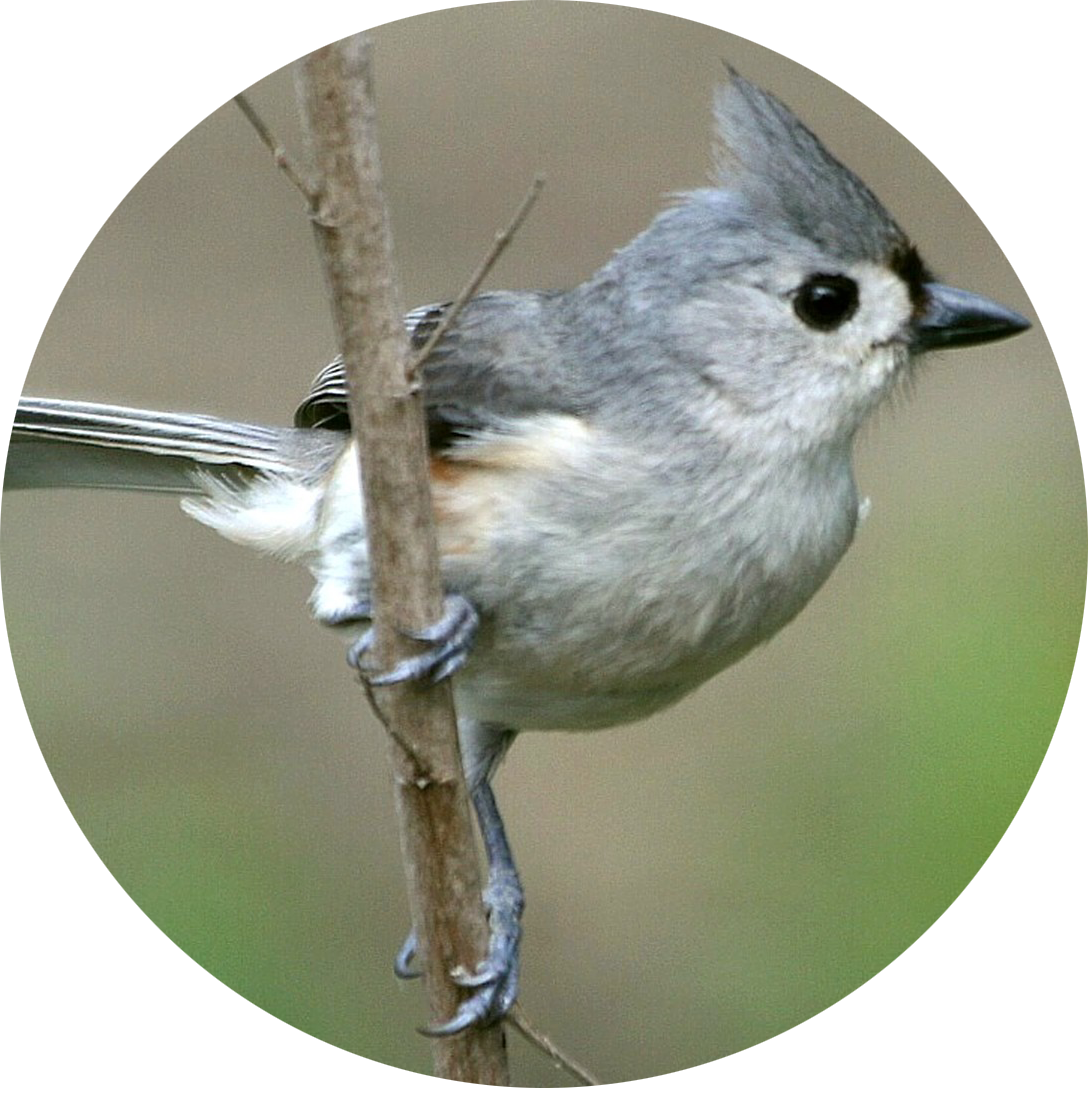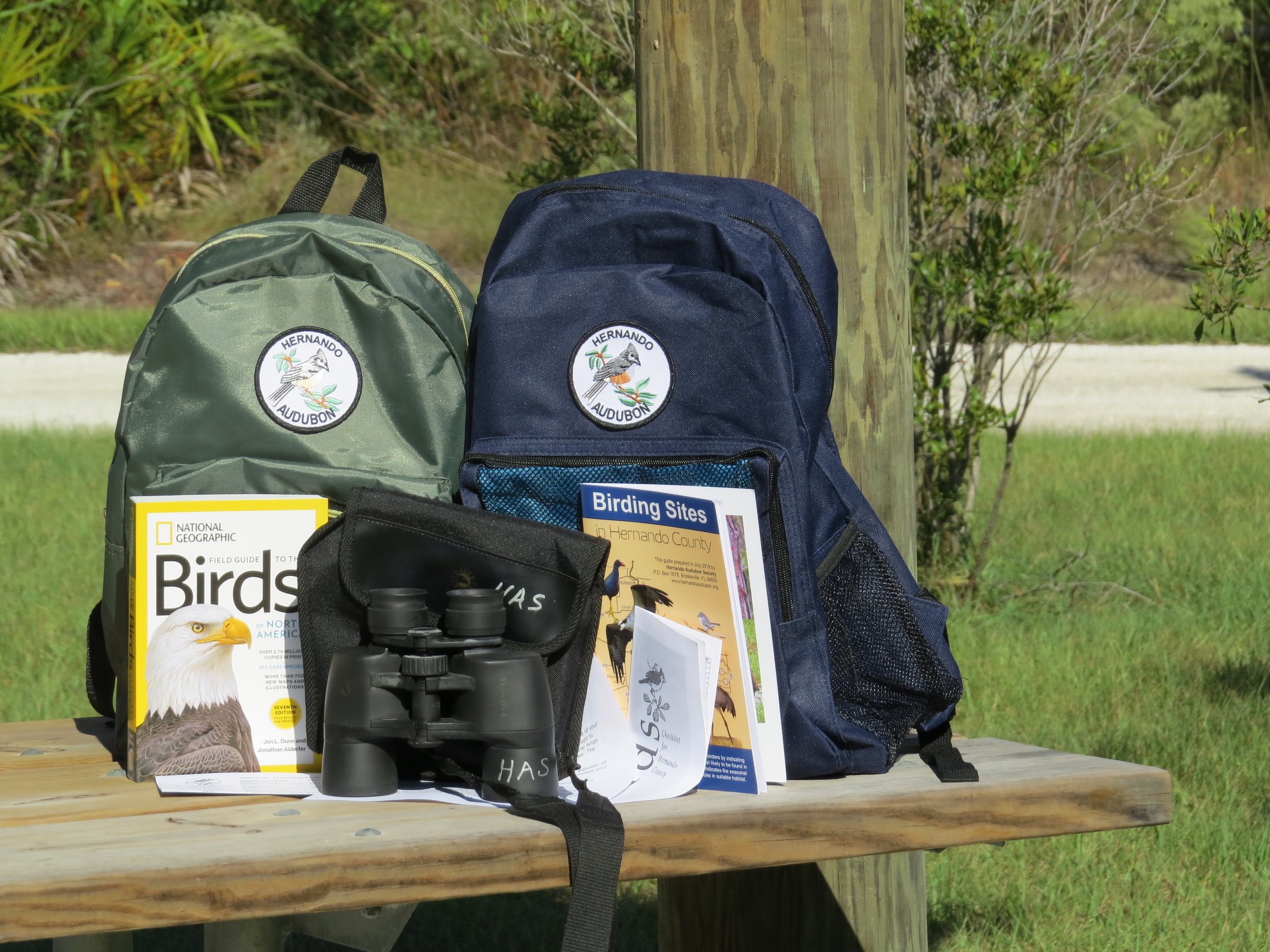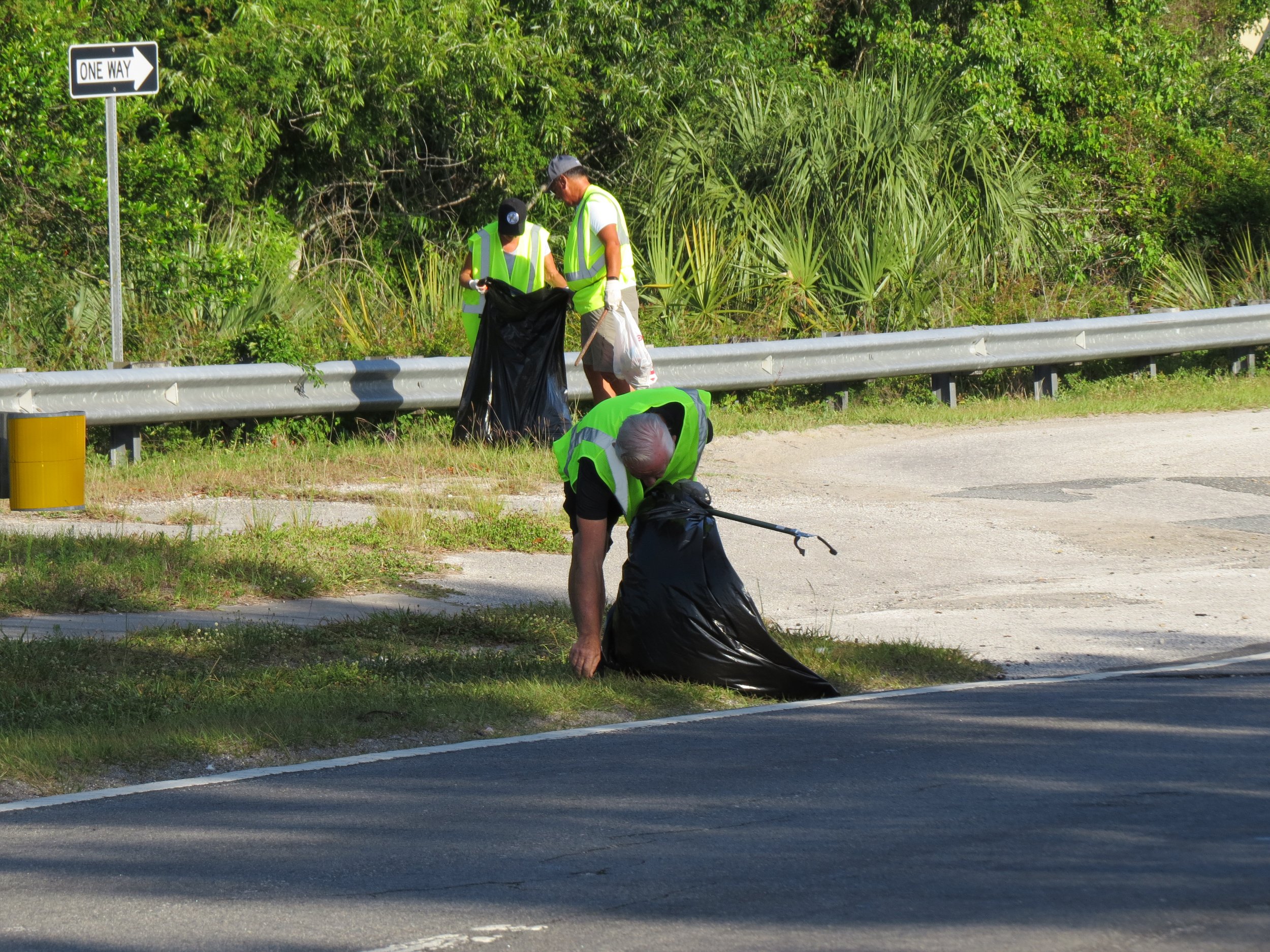Hernando Audubon Christmas Bird Counts (CBC) – Since December 1900 the National Audubon Society has conducted an annual Christmas bird census that has become known as the Christmas Bird Count. From December 14 through January 5 each year, thousands of volunteers throughout the United States brave the snow, wind, or rain, and take part in the Audubon CBC. Hernando Audubon participates in two annual CBCs: one is centered at Bystre Lake, east of Brooksville, and the other extends from Pine Island in Hernando County to Crews Lake in Pasco County. The Brooksville CBC has been conducted annually since 1979 and had a high count of 130 species seen in 1990. The Aripeka-Bayport CBC has been run since December 1991 and has averaged 145 bird species, ranging from a low of 132 species to a high of 158 species. Audubon and other organizations and scientists use the data collected in this long-running wildlife census to assess the health of bird populations, and to help guide conservation actions. When combined with other surveys, such as the Breeding Bird Survey and eBird entries, it provides a picture of how the continent's bird populations have changed in time and space over the past years. This long-term perspective is vital for conservationists as it informs strategies to protect birds and their habitat. To help on the Brooksville CBC, contact Linda: lindalark85@gmail.com or text 352-428-2629. To help on the Aripeka-Bayport CBC, contact Bev: bevalhansen@gmail.com or 352-686-0460.
Other Conservation Initiatives
Birding Backpacks – Hernando Audubon has supplied each of the four libraries in Hernando County with a birding backpack, which contain binoculars, a birding field guide, a pamphlet listing birding sites in Hernando County, and a birding checklist, along with some basic instructional material. The person who borrows the backpack must leave the field guide and binoculars with the backpack, but can keep a copy of Birding Sites in Hernando County and the county bird checklist. The thought behind placement of the backpacks in county libraries is to introduce new individuals to the wonderful world of birdwatching. This is modeled after other Audubon Chapters that have had success making birding backpacks available to the public. It took a while for the libraries to begin circulating the backpacks because of Covid restrictions, but they have now made the backpacks available. Because of heavy use, they asked Hernando Audubon to replenish those materials that the borrower can keep.
Adopt-A-Road – Hernando Audubon is a participant in Hernando County’s Adopt-A-Road Program. Our 1.25-mile stretch of road is located along Northcliffe Blvd. between U.S. 19 and Deltona Blvd. Our volunteers pick up trash along Northcliffe Blvd. three times per year to keep this stretch of roadway free of debris. One of our goals is to involve students from Springstead High School who need community service hours. When finished with the trash pick-up, we take the students to breakfast and introduce them to Hernando Audubon and our conservation initiatives. To volunteer, contact Steve.Smetko@frontier.com or 352-247-979.
EagleWatch Program Participation – Hernando Audubon is an active participant in the Florida Audubon’s EagleWatch program. While the number of nests monitored by Hernando Audubon volunteers varies from year-to-year, in recent years six volunteers monitored five eagle nests. Based at the Audubon Center for Birds of Prey, Audubon EagleWatch seeks information about Bald Eagles, active nest locations, and possible disturbances or threats to nesting activities. As one of the premier community science programs in Florida, EagleWatch has 600 volunteers who monitor over 1000 nests, collecting key data that helps keep a finger on the pulse of how the eagle population is doing. EagleWatch is the only ongoing, statewide eagle nest monitoring program in Florida. Many entities, including state and federal wildlife biologists, rely on the data generated to make management decisions.
To get involved, contact regional coordinator Kim Rexroat: krexroat@tampabay.rr.com
Junior Audubon – From 2014 to 2024 Hernando Audubon sponsored a Junior Audubon Club at Eastside Elementary School, which was led by Joe Murphy, Special Science Team Instructor. Eastside Elementary is a Title One School, meaning that the majority of students live at or below the poverty line. During this period, about 250 students were members of the club. After a hiatus during the Covid pandemic, the club returned to normal meetings in spring 2022, when 32 students from third to fifth grades enrolled in the club. Student members learned about the value of maintaining our natural ecosystems and protecting the organisms that inhabit them. In 2022 students planted native plants in the Eastside Elementary School’s Pollinator Garden, worked with Florida Fish and Wildlife Conservation Commission biologists to learn about Gopher Tortoises by scoping an actual burrow, and learned how service and therapy dogs are selected and trained. In other years students learned more about Florida wildlife and heard special guest speakers who inspired the students to consider careers in the sciences. Hernando Audubon provided Audubon Adventures for the students. Avian Research and Conservation Institute and Hernando Audubon supplied binoculars for the use of the students.
Plants for Birds Grants – National Audubon Society started a program called Plants for Birds in 2016 which emphasized reversing the steady decline in bird populations in North America by landscaping with native plants.
Challenger K-8 School of Science and Math –A Hernando Audubon board member applied for and received two Plants for Birds grants from Audubon Florida and Florida Power and Light in 2019 and 2020 for use at Challenger K-8 School for Science and Math. The grants were designed to utilize native plants in landscaping near the two main entrances at the school. A large sign was installed near the garden explaining the value of native plants to both insects and birds, and smaller signs identified various plants.
Avian Research and Conservation Institute (ARCI) donated 4 pairs of binoculars for the use of students in the budding Junior Audubon Club at Challenger K-8 School, but unfortunately due to Covid restrictions and the later retirement of the lead teacher, the Junior Audubon Club no longer functions
In 2021 Ken Meyer, Executive Director of ARCI, erected a Kestrel nest box on a mounting pole for a pair of the Southeastern subspecies of American Kestrels that had been seen on the school grounds for several years. The mated pair of Kestrels perched near the box immediately, and the female laid 6 eggs in March-April 2021. In 2022 the pair raised two broods of chicks. ARCI banded some of those chicks and attached radio antennae so the chicks’ roaming could be documented. In 2023 this falcon pair raised three chicks in a first nest, but a second nest failed, perhaps because of the presence of ants.
Nature Coast Botanical Gardens— To better educate a diverse population about the importance of wildflowers in supporting bird populations, in 2022 Hernando Audubon received a Plants for Birds Grant from Audubon Florida and Florida Power and Light and a matching grant from National Audubon Society. These grants were used to revitalize the wildflower component of the Nature Coast Botanical Gardens located in Spring Hill. Some of the existing plantings were removed and replaced with native pollinators. A two-tiered water feature was added to attract birds, which will serve as a water source and allow birds to bathe. Additionally, a predator-proof bird feeder was added to attract a variety of songbirds, both migrating and resident. Educational signage was developed and posted to describe the importance of planting wildflowers to attract insects and support declining bird populations and encourage similar plantings by residents. The Nature Coast Botanical Gardens receives approximately 12,500 visits annually. The new signage will educate this diverse local populace and Florida visitors about the value of planting native wildflowers to support declining bird populations.
Metal Recycling – For the past twelve years Hernando Audubon has been collecting aluminum cans and other metals, and taking them to a recycling center for cash. While this is a relatively small conservation initiative for Hernando Audubon, it helps clean up our roadsides, prevents these items from entering the Hernando County landfill, and generates cash for Hernando Audubon’s operating budget (about $300/year). Please bring your cans to a Hernando Audubon meeting or birding trip, and we will see that they are recycled.
Bald Eagle adult and chick in nest, Photo by Jen Fouts
Pollinator Garden at Eastside Elementary School, Photo by Joe Murphy








